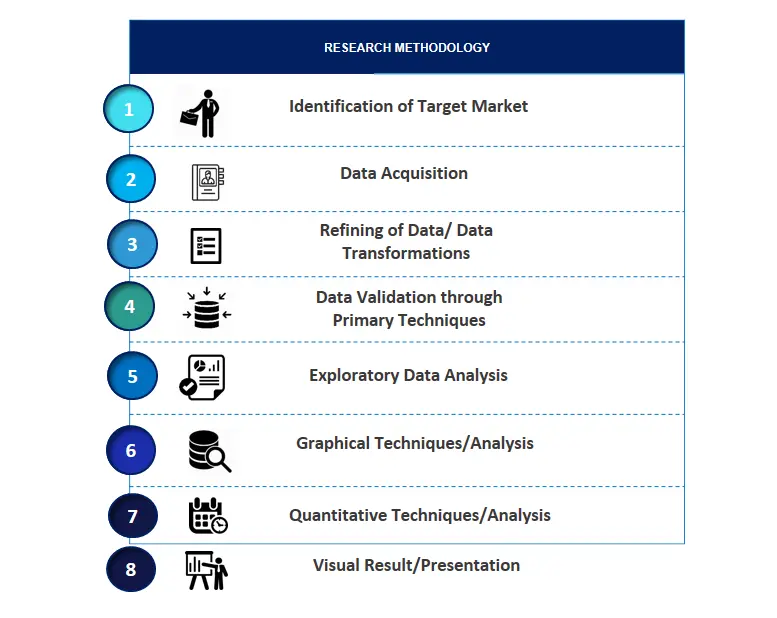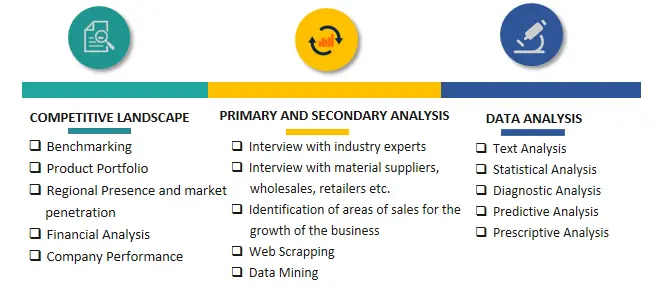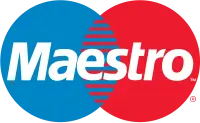
Plant-based Yogurt Market Size, Growth, Trends, Demand, Challenges and Future Opportunities
Plant-based Yogurt Market Growth, Size, Trends Analysis - By Source, By Flavor, By Distribution Channel - Regional Outlook, Competitive Strategies and Segment Forecast to 2033
| Published: Jan-2025 | Report ID: FOOD2503 | Pages: 1 - 248 | Formats*: |
| Category : Food & Beverages | |||
- Danone Canada's Silk brand debuted a new plant-based yogurt that contains Canadian pea protein and is high in protein in February 2024. Each 175g portion has a thick, Greek-style texture and 12g of protein. The new product has great taste, consistency, and nutritional benefits and comes in Vanilla and Key Lime flavors. Silk has also added new flavors and sizes to its lineup and changed the recipe for its current line of coconut-based yogurts.
- Marvelous Foods launched a new line of plant-based coconut yogurt products, Yeyo, at Ole supermarkets in October 2023. With 100 locations across 31 major cities and over 10 million registered members, Ole, a boutique grocery brand owned by China Resources Vanguard, is the largest premium supermarket chain in China. At first, Beijing's Ole stores would sell Yeyo yogurt.
- Müller, a well-known dairy company founded in Germany, announced in July 2023 that plant-based versions of its iconic products would be available in the UK. The products introduced were corner yogurts and rice pudding.


| Report Metric | Details |
| Market size available for years | 2020-2033 |
| Base year considered | 2023 |
| Forecast period | 2024-2033 |
| Segments covered | By Source, By Flavor, By Distribution Channel |
| Regions covered | North America, Asia-Pacific, Latin America, Middle East & Africa and Europe |
| Companies Covered | Danone; Hain Celestial; General Mills Inc; Stonyfield Farm, Inc; Kite Hill; Daiya Foods Inc; Chobani, LLC; Hudson River Foods; Good Karma Foods, Inc. |
- Health-Conscious Consumers
- Vegan and Vegetarian Consumers
- Lactose-Intolerant Individuals
- Food & Beverage Manufacturers
- Retail Chains & Supermarkets
- E-commerce Platforms
- Specialty and Organic Food Stores
- Hospitality & Foodservice Industry
- Sports and Fitness Enthusiasts
- Dietary Supplement Manufacturers
- Exporters & Importers
- Distributors & Wholesalers
| By Source: | |
| By Flavor : | |
| By Distribution Channel: |
- Global Plant-based Yogurt Market Size (FY’2024-FY’2033)
- Overview of Global Plant-based Yogurt Market
- Segmentation of Global Plant-based Yogurt Market By Source (Almond, Oat, Soy, Coconut, Others)
- Segmentation of Global Plant-based Yogurt Market By Flavor (Flavored Yogurt, Non-Flavored Yogurt)
- Segmentation of Global Plant-based Yogurt Market By Distribution Channel (B2B, B2C)
- Statistical Snap of Global Plant-based Yogurt Market
- Expansion Analysis of Global Plant-based Yogurt Market
- Problems and Obstacles in Global Plant-based Yogurt Market
- Competitive Landscape in the Global Plant-based Yogurt Market
- Impact of COVID-19 and Demonetization on Global Plant-based Yogurt Market
- Details on Current Investment in Global Plant-based Yogurt Market
- Competitive Analysis of Global Plant-based Yogurt Market
- Prominent Players in the Global Plant-based Yogurt Market
- SWOT Analysis of Plant-based Yogurt Market
- Global Plant-based Yogurt Market Future Outlook and Projections (FY’2024-FY’2033)
- Recommendations from Analyst
1.1. Scope of the report1.2. Market segment analysis
2.1. Research data source2.1.1. Secondary Data2.1.2. Primary Data2.1.3. SPER’s internal database2.1.4. Premium insight from KOL’s2.2. Market size estimation2.2.1. Top-down and Bottom-up approach2.3. Data triangulation
4.1. Driver, Restraint, Opportunity and Challenges analysis4.1.1. Drivers4.1.2. Restraints4.1.3. Opportunities4.1.4. Challenges4.2. COVID-19 Impacts of the Global Plant-based Yogurt Market.
5.1. SWOT Analysis5.1.1. Strengths5.1.2. Weaknesses5.1.3. Opportunities5.1.4. Threats5.2. PESTEL Analysis5.2.1. Political Landscape5.2.2. Economic Landscape5.2.3. Social Landscape5.2.4. Technological Landscape5.2.5. Environmental Landscape5.2.6. Legal Landscape5.3. PORTER’s Five Forces5.3.1. Bargaining power of suppliers5.3.2. Bargaining power of buyers5.3.3. Threat of Substitute5.3.4. Threat of new entrant5.3.5. Competitive rivalry5.4. Heat Map Analysis
6.1. Global Plant-based Yogurt Market Manufacturing Base Distribution, Sales Area, Product Type6.2. Mergers & Acquisitions, Partnerships, Product Launch, and Collaboration in Global Plant-based Yogurt Market
7.1. Global Plant-based Yogurt Market Size, Share and Forecast, By Source, 2020-20267.2. Global Plant-based Yogurt Market Size, Share and Forecast, By Source, 2027-20337.3. Almond7.4. Oat7.5. Soy7.6. Coconut7.7. Others
8.1. Global Plant-based Yogurt Market Size, Share and Forecast, By Flavor, 2020-20268.2. Global Plant-based Yogurt Market Size, Share and Forecast, By Flavor, 2027-20338.3. Flavored Yogurt8.4. Non-Flavored Yogurt
9.1. Global Plant-based Yogurt Market Size, Share and Forecast, By Distribution Channel, 2020-20269.2. Global Plant-based Yogurt Market Size, Share and Forecast, By Distribution Channel, 2027-20339.3. B2B9.4. B2C9.4.1. Hypermarkets & Supermarkets9.4.2. Specialty Stores9.4.3. Online9.4.4. Others
10.1. Global Plant-based Yogurt Market Size and Market Share
11.1. Global Plant-based Yogurt Market Size and Market Share By Region (2020-2026)11.2. Global Plant-based Yogurt Market Size and Market Share By Region (2027-2033)11.3. Asia-Pacific11.3.1. Australia11.3.2. China11.3.3. India11.3.4. Japan11.3.5. South Korea11.3.6. Rest of Asia-Pacific11.4. Europe11.4.1. France11.4.2. Germany11.4.3. Italy11.4.4. Spain11.4.5. United Kingdom11.4.6. Rest of Europe11.5. Middle East and Africa11.5.1. Kingdom of Saudi Arabia11.5.2. United Arab Emirates11.5.3. Qatar11.5.4. South Africa11.5.5. Egypt11.5.6. Morocco11.5.7. Nigeria11.5.8. Rest of Middle-East and Africa11.6. North America11.6.1. Canada11.6.2. Mexico11.6.3. United States11.7. Latin America11.7.1. Argentina11.7.2. Brazil11.7.3. Rest of Latin America
12.1. Danone12.1.1. Company details12.1.2. Financial outlook12.1.3. Product summary12.1.4. Recent developments12.2. Hain Celestial12.2.1. Company details12.2.2. Financial outlook12.2.3. Product summary12.2.4. Recent developments
12.3. General Mills Inc
12.3.1. Company details12.3.2. Financial outlook12.3.3. Product summary12.3.4. Recent developments12.4. Stonyfield Farm, Inc12.4.1. Company details12.4.2. Financial outlook12.4.3. Product summary12.4.4. Recent developments12.5. Kite Hill12.5.1. Company details12.5.2. Financial outlook12.5.3. Product summary12.5.4. Recent developments12.6. Daiya Foods Inc12.6.1. Company details12.6.2. Financial outlook12.6.3. Product summary12.6.4. Recent developments12.7. Chobani, LLC12.7.1. Company details12.7.2. Financial outlook12.7.3. Product summary12.7.4. Recent developments12.8. Hudson River Foods12.8.1. Company details12.8.2. Financial outlook12.8.3. Product summary12.8.4. Recent developments12.9. Good Karma Foods, Inc12.9.1. Company details12.9.2. Financial outlook12.9.3. Product summary12.10. Others12.9.4. Recent developments
SPER Market Research’s methodology uses great emphasis on primary research to ensure that the market intelligence insights are up to date, reliable and accurate. Primary interviews are done with players involved in each phase of a supply chain to analyze the market forecasting. The secondary research method is used to help you fully understand how the future markets and the spending patterns look likes.
The report is based on in-depth qualitative and quantitative analysis of the Product Market. The quantitative analysis involves the application of various projection and sampling techniques. The qualitative analysis involves primary interviews, surveys, and vendor briefings. The data gathered as a result of these processes are validated through experts opinion. Our research methodology entails an ideal mixture of primary and secondary initiatives.



Frequently Asked Questions About This Report
PLACE AN ORDER
Year End Discount
Sample Report
Pre-Purchase Inquiry
NEED CUSTOMIZATION?
Request CustomizationCALL OR EMAIL US
100% Secure Payment






Related Reports
Our Global Clients
Our data-driven insights have influenced the strategy of 200+ reputed companies across the globe.




















